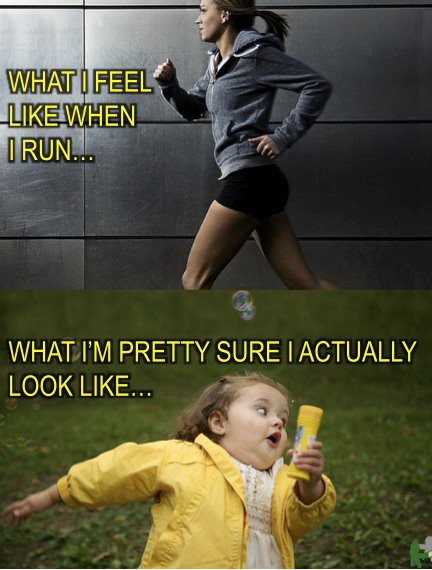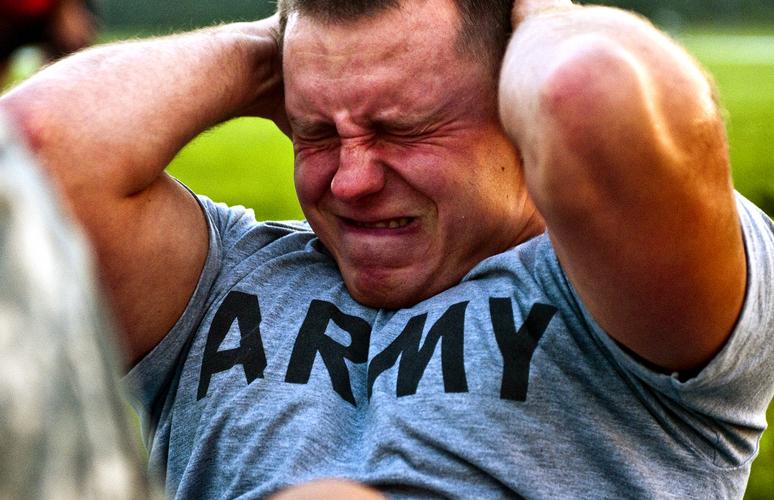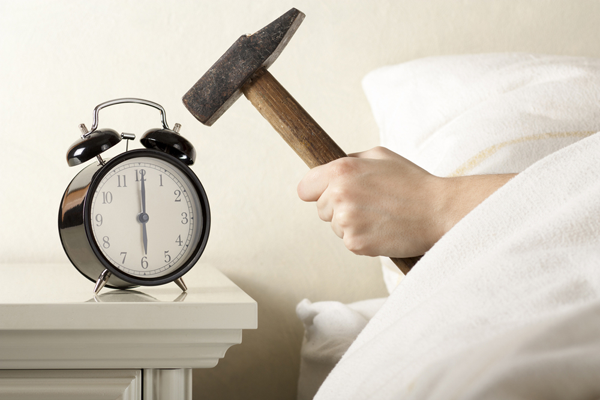There are 7 non negotiable truths when it comes to rehabilitating a bad back. Rehabbing a bad back takes patience, precision and the willingness to stay the course no matter what. Some things in life need to be done a certain way in order for them to work. Like getting ready for work in the morning, you wouldn’t get dressed, do your hair then take a shower only to have to do it all over again. NO, there is a system you create that allows you to do it the most effective way possible. The same goes for rehabilitating your back without using drugs, surgery’s or shots. It’s best to be done a certain way that fits your specific body.
The 7 Gospels of rehabbing a bad back
1) Exercise Daily:
Some specialists will say that your rehab exercises should be done at least 3 times per week, low back exercises appear to be most beneficial when performed daily (e.g., Meyer et al., 1985)
I’m not talking about your typical exercise routine. When I say exercise daily I’m not suggesting you google “the best workout plan for back pain”. The results would be scary! It’s deeper than that. If your on a holistic rehabilitation journey the exercise program that your following is specific for you. It should high-light your weaknesses and put your pain mechanisms on the back burner until your ready to attempt them PAIN FREE!
The exercise program that I am talking about is one that will help you rebuild the things that have caused you the back pain to begin with. Things like desk jobs, poor posture and poor body mechanics can really do damage to your body. Over the long haul these things can lead to ruptured, herniated/bulging discs and more. So your exercise program needs to really be specific.
Getting Started:
I am a firm believer in covering core stability basics when it comes to rehabbing a bad back. Before you do anything else be sure you add these exercises to your current program.
My suggestion is to fill your first half of the workout up with these exercises and spend the last half focusing on something you enjoy. Just be sure the exercise you enjoy isn’t causing you more pain or making things worse.
Check them out!
1 Arm Farmers Carry: Do this exercise for 3 sets 20 seconds on each arm.
Dead Bugs: Do this exercise for 3 sets 8-10 reps each side holding stretched out position for an 8 count.
Bird Dogs: Do this exercise for 3 sets of 8. Hold each stretched position for 8 seconds.
McGill Crunch: Do 3 sets of 8 reps holding each crunch for 8 seconds
Hip Hinge Practice: Do 3 sets of 10-15 reps. Focusing on a stiff core and moving pain free. If you have pain take this exercise out for now and work on the top 4 before moving on to anything else.
These are not the only core stiffening exercises there are. These are the most commonly used by some of the best back pain specialists in the world.
If you’re a little more advanced and you want to look at how I program my strength training you can check these two articles out
Training Your Back With back Pain
2) Exercise Must Not Make the Pain Worse
It’s the most frustrating thing I deal with. “My doctor said to start exercising more but even when I exercise the pain is still there or it gets worse”. This is a very simple truth when it comes to rehabilitating a bad back. Focus on the movements that don’t cause you pain. Write down the specific movements that cause pain and put those off to the side. We call these your pain mechanisms. They are the movements that exacerbate your symptoms. If it’s sitting down that has you popping Tylenol every 4 hours then you may have some flexion intolerances that will need to be corrected with exercise. Not that you wont be able to sit for the rest of your life but for the time being you need to avoid it like the plague.
A big misconception when it comes to working out and rehabbing a bad back is that you need to work through the pain in order to see the results. This is way wrong…way way wrong. It’s actually the opposite. You see, when your lower back hurts that means that there is something that you’re not doing right that is causing the pain. This isn’t limited to just your basic movements. Even when you get further along in your training, always grade progression off of pain not how much stronger you have gotten. If you can’t do it without pain then your not ready for that particular exercise. You don’t have to right it off forever, just for enough time to be able to re-groove the proper mechanics so that the exercise isn’t a problem any more.
I talk a bit more about this along with 4 ways to avoid exhaustion indused back pain here
3) Walk more
I know this sounds a little basic but believe it or not there is a lot of truth behind the effects of walking on a bad back. It’s not just about sitting less and standing more its about reducing the compression loads on the spine. This is especially true when you’re trying to rehab a bad back. The way I look at it is this. As you are training your core for stiffness and trying to re align the body to move in a way to support healthy spine function, things may get a little stiff at times. Walking allows the limbs and musculature system to stay loose and active. Especially the hips which tend to get the short end of the stick. Not only that the walking actually reduces the compressive loads on the spine. I was recommended to focus more on fast paced walking which spreads more energy through out the body rather then keeping the majority of it in and around the lower back.
My recommendation for walking is for it to be done first thing in the morning. Unfortunately, the morning is normally a pretty stiff time for most people suffering from a bad back. You can barely roll out of bed let alone bend down to put your pants on. Take at least 15-20 minutes and do a quick walk around the block. Even better, after you get done with your walk take a hot shower. By the time all this is done it will have been well over an hour since you woke up. The first hour after waking is such an important time for anyone dealing with a bad back. Believe it or not what you do within that hour can set you up for either having a good day or a bad one.
4) The Magic Hour
Not to be confused with happy hour. I mentioned briefly about the first hour after waking up and how important it is to make good choices when it comes to your back. Most people wake up, walk down stairs, sit down to have breakfast and coffee, get back up to get a few things together, sit back down to watch the news or read a book, get up to use the bathroom (depending on whether you’re a guy or girl) spend another 30 minutes sitting on the pot reading. Then your off to work in your car where you will sit for the next 15-30 minutes.
Here is the problem with that. It’s called Diurnal Variation which is just a fancy way of saying your discs are super hydrated first thing in the morning. If you’re doing the wrong things such as bending over and sitting too much you can really make things worse. Obviously there are some things you just can’t help but for the most part you can limit your time on some of those “important” morning rituals. To make things worse, there are some people who would rather roll out of bed and be at the gym before they can even wipe their eyes. Thats great for getting it in but loading the spine and taking it through its full range of motion that early isn’t good for a recovering bad back (e.g., Adams and Dolan, 1995, McGill and Axler, 1996)
5) Endurance Over Strength…always
We have been brain washed into believing two things:
1) If you’re physically stronger you will have less pain
2) Endurance is built by pushing yourself past your limit.
When you’re rehabbing a bad back it’s endurance that trumps strength any day of the week. The best way to do it is to use more repetitions of less demanding weight. This will both improve endurance and build strength in a safe way. When your in the business of trying to teach yourself proper body mechanics whether that is learning the hip hinge, or learning how to “co contract” your core and breathe at the same time you have to go slow. A challenge is good but when your trying to perfect proper movement, you need to be able to repeat perfect form over and over until it becomes second nature. When your in the gym training for strength you’re only focus is to push harder, get one more rep or one more pound. There is a time and place for that, just not in a rehab setting.

Instead, always stop while your ahead. The Russians use a technique called the reverse pyramid to ensure their athletes are not getting too fatigued. It ensures perfect form and execution time and time again. It looks a little something like this.
For the McGill Crunch you would set up your reverse pyramid with the 1st set having the highest rep count at the top. Lets say your first set will consist of 10 reps. Once you complete that first set and take a short 20 second break your on to the next set which consists of 9 reps, the next will be 8 and the one after that will be 7. You get the picture? So you’re going at it with the same amount of intensity your just always stopping one rep shy of what you did the time before. This makes your workout fatigue proof. The next time you do it you can bump the entire workout up by one rep for each set.
If you want to hear a little more on how to build core endurance check this out
6) Nobody is Created Equal
When it comes to back pain you have to experiment for yourself. If you have an extension issue and your lower back seems overly wound up, than the Bird Dogs may not be a good exercise for you until you can get a manual therapist to unglue those over tight muscles. The same goes with the Dead Bugs. If putting yourself in that position causes too much strain on the lower back than don’t do it.
You don’t want to get discouraged if some of the exercises you see on this site don’t work for you. You have to find a level playing ground for yourself. I am just giving you the most popular moves prescribed to individuals struggling with back pain. I can’t stress it enough, that doesn’t mean that all of the top exercises will benefit you.

Apply these rules to everything you do when it comes to rehabbing your back pain.
Follow these two basic rules
- If the exercise helps and brings relief than add it to your list of rehabilitation exercises and continue to use it.
- If the exercise causes more pain, stop doing it and reevaluate what you could be doing wrong or what you will need to do to strengthen the muscles that are not allowing me to do the exercise pain free.
7) Be Sold Out
When I was a full time trainer I could always tell the people who were going to see the most success. It was always those who were patient and completely sold out for what I was telling them. They never questioned or dragged their feet. They hit the ground running and did everything I said . They were always the most successful.
The same applies to your back rehabilitation plan. Be patient and give it time. We all want super fast results where the pain relief is immediate. The only thing that works that fast are drugs. You have to remember it took you years to get to where you are now. It’s going to take time to retrain your body and create new habits. For some cases, you could be waiting months before you get any solid change. The cool thing I have experienced since I started down this journey are the smaller number of acute issues I have with my back. I used to have severe acute flair ups ranging from muscle spasms, to random floating tightness in my upper back, neck and hips. Well all thats gone. Now I can narrow my acute flair ups down to one or two things and it’s always a motivating factor for me to try and over come whatever it is I can’t do. Even with a ruptured disc I have goals for myself to do things that may take 6 months to a year to feel comfortable doing them but I know that when I do get to do them I will be a stronger more balanced person than I was 4-5 years ago and thats definitely something to celebrate!
Take it one step at a time. There are a lot of moving parts when it comes to working through back pain. The best thing I did was have a solid understanding of what my issue was first before I started anything. If I hadn’t of gotten my MRI 5+ years ago, trying to heal my back would be like taking shots in the dark. Always educate yourself first before you do anything!
Thanks for reading!
ttys,
William
Do you experience morning back pain? If so, what do you do that brings the most relief? Let me know below!




Hi,
Just wanted to say that your articles are great!
I’ve been struggling with chronic back pain for 2.5 years now, I’m better now than I was a year ago (i used to travel laid fown on yhe back car seats) but still experience spasms every few months which knock back my progress.
No scans have shown any specific issue as yet (getting more results tomorrow) and its been trial and error with exercise along the way.
I’ve found it very hard to accept that I need to do less/different things (eg, I used to love HIIT on treadmill-its now a no-no) as I’m quite competitive (with myself). I was starting to think there wouldn’t be an end to the pain ever. Reading through your site has given me renewed hope that there is a way forward, so thank-you 🙂
Wow! Thanks so much for the kind words! My number one goal is to educate people just like you on the power of proper movement and exercise on back pain. It took me a lot of wasted doctor visits to realize that I wasn’t getting any where with the professionals I was seeing. It has been a journey and it’s still work at times but every year I get better and better and that’s drug free! I am very competitive myself and it has been hard to give up certain lifts (dead lifts, loaded squats) due to reoccurring pain but as I continue to built up my weaknesses I believe I will be back with vengeance! It sounds like your on the right track. If you have any questions on specifics as far as how you should program your training don’t hesitate to ask!